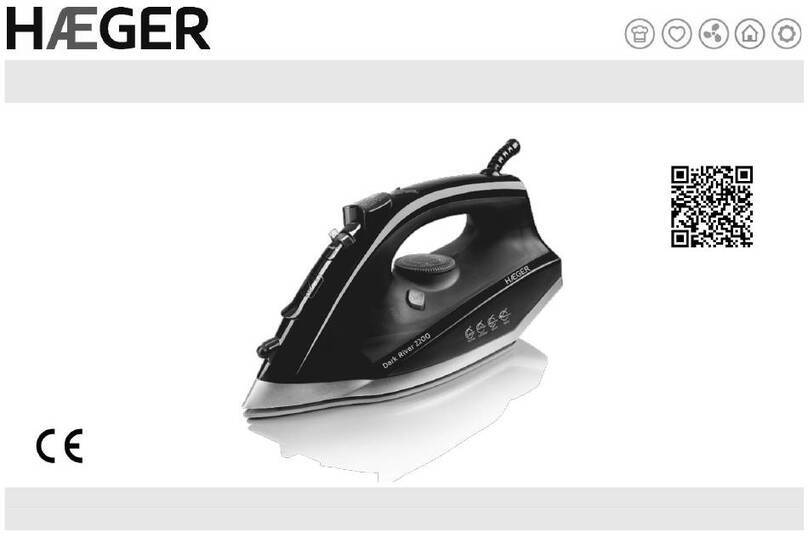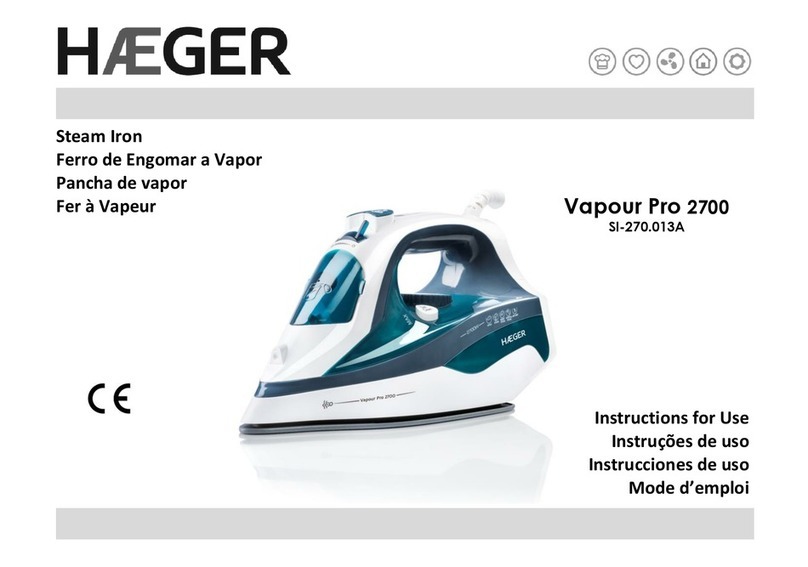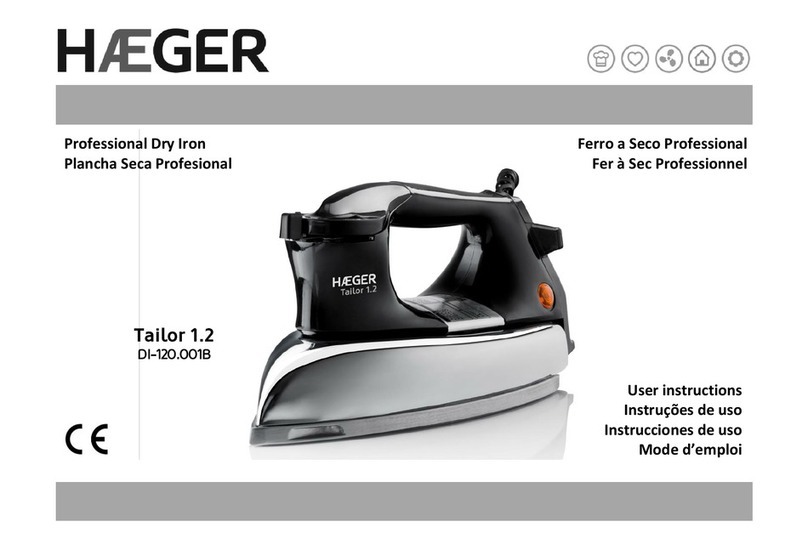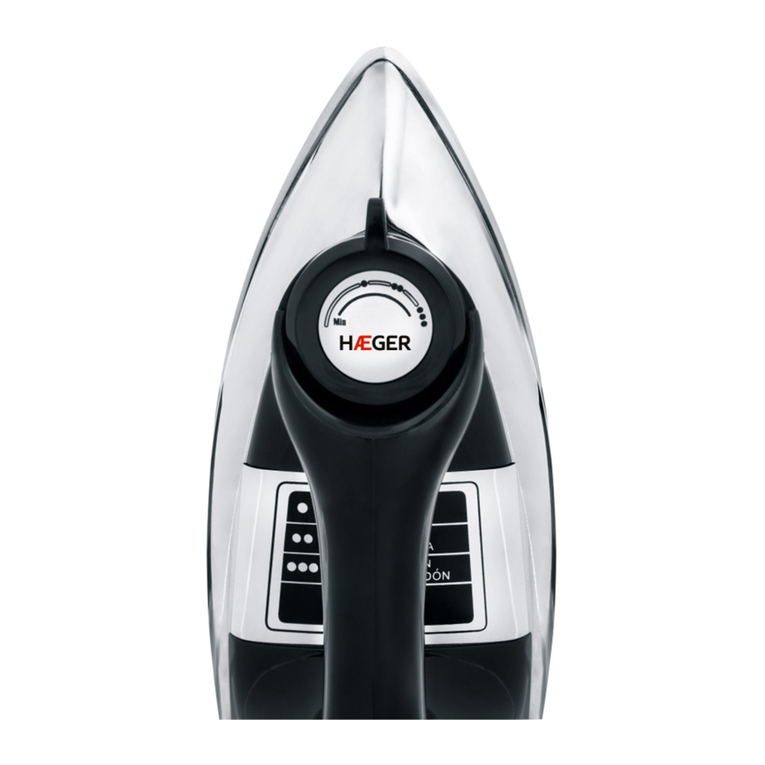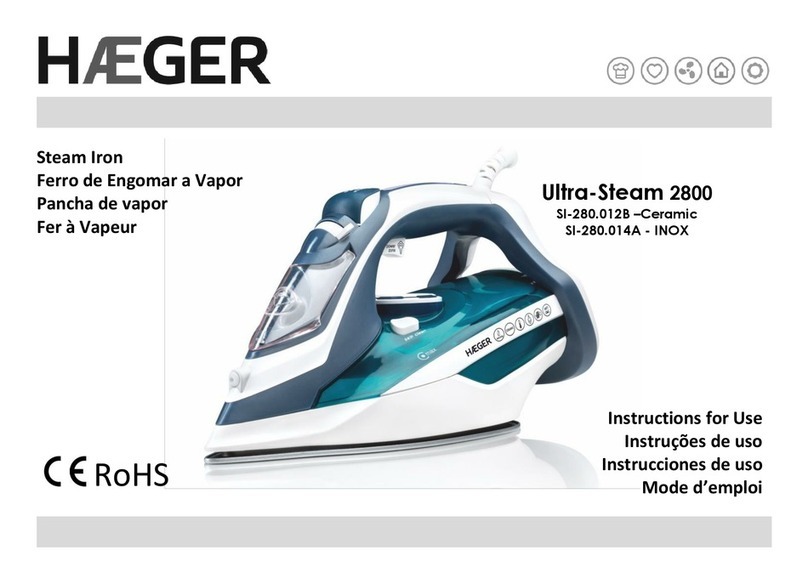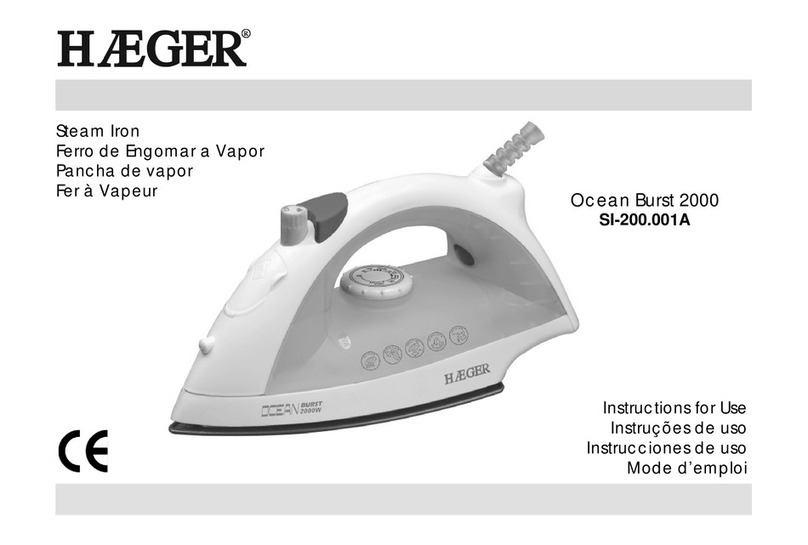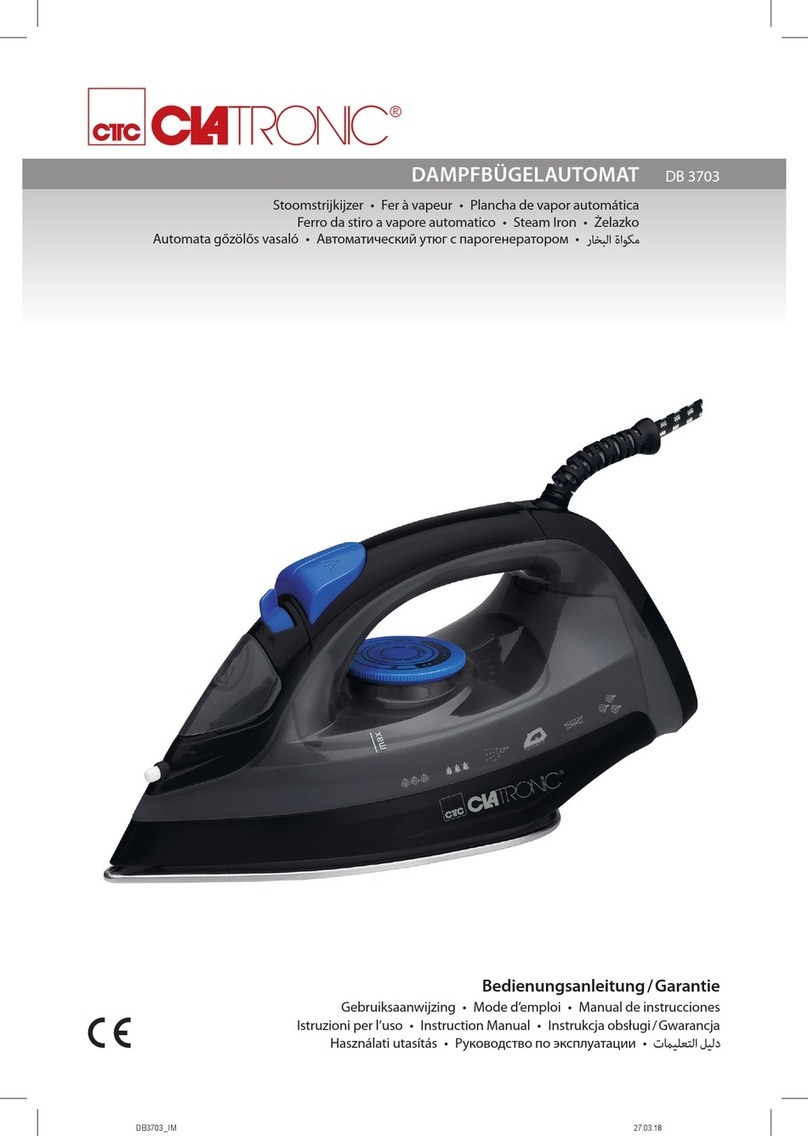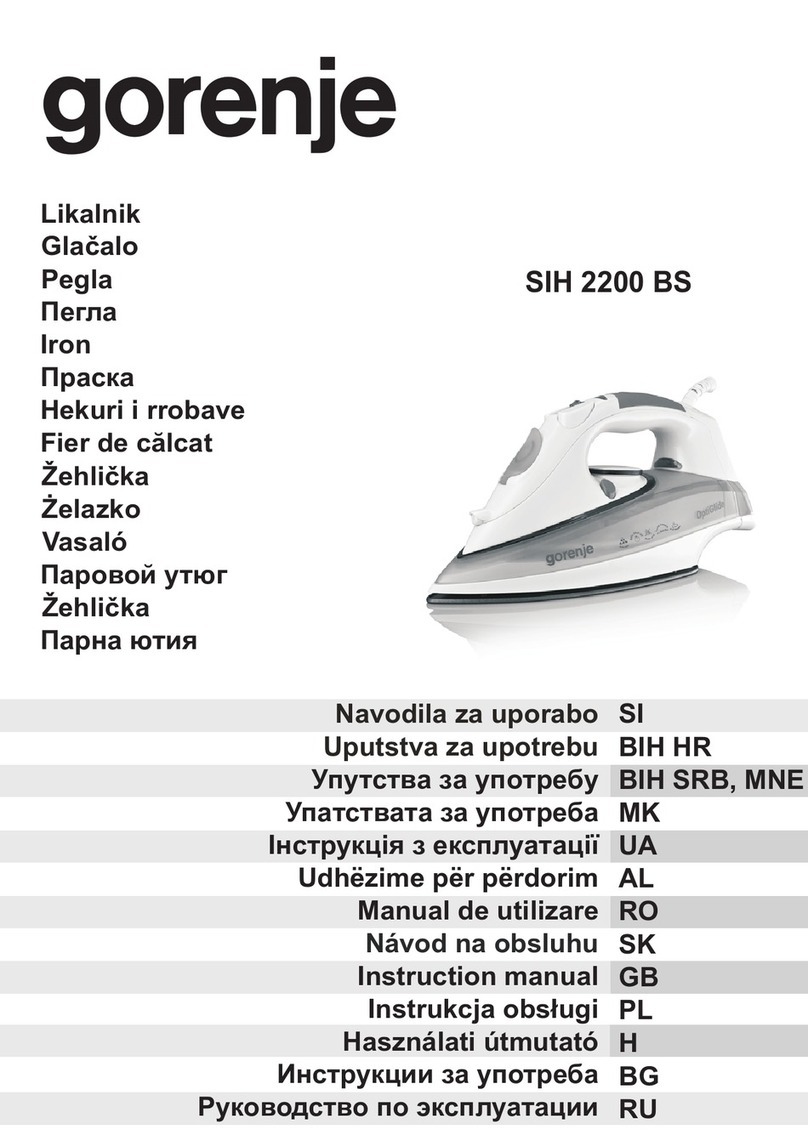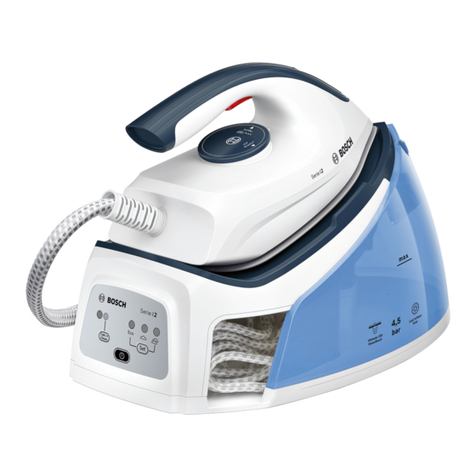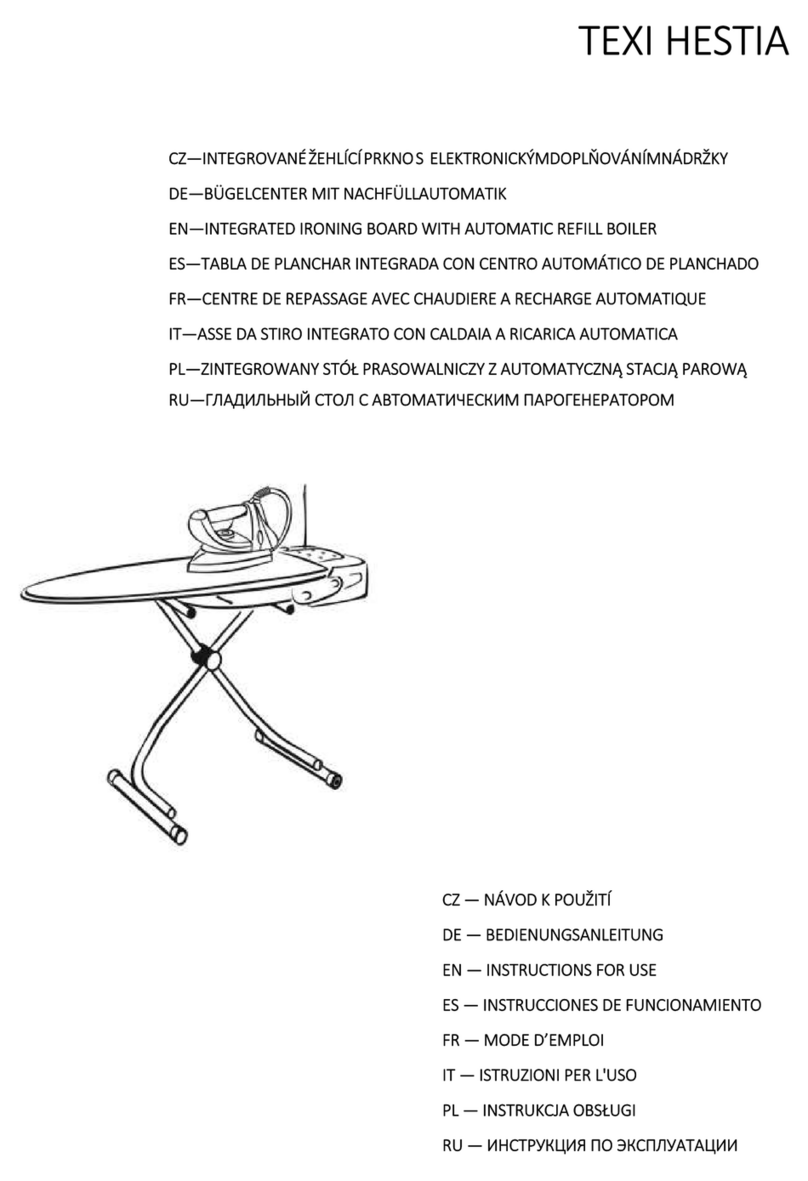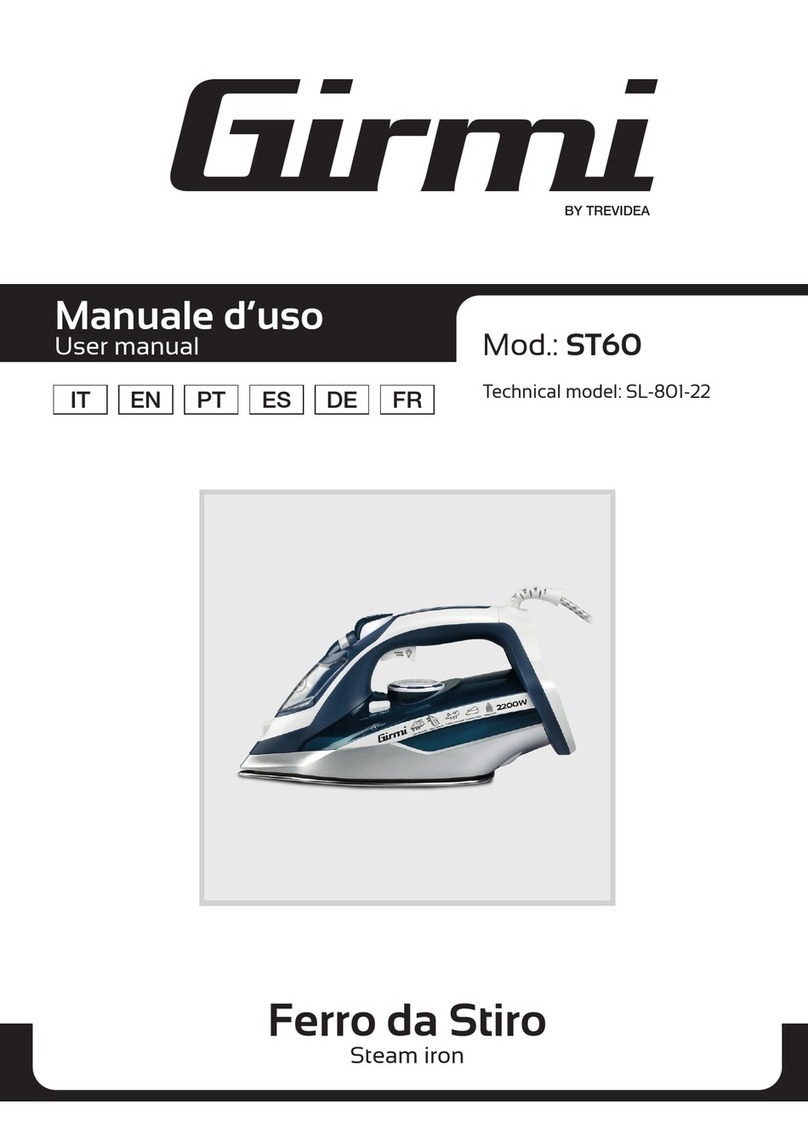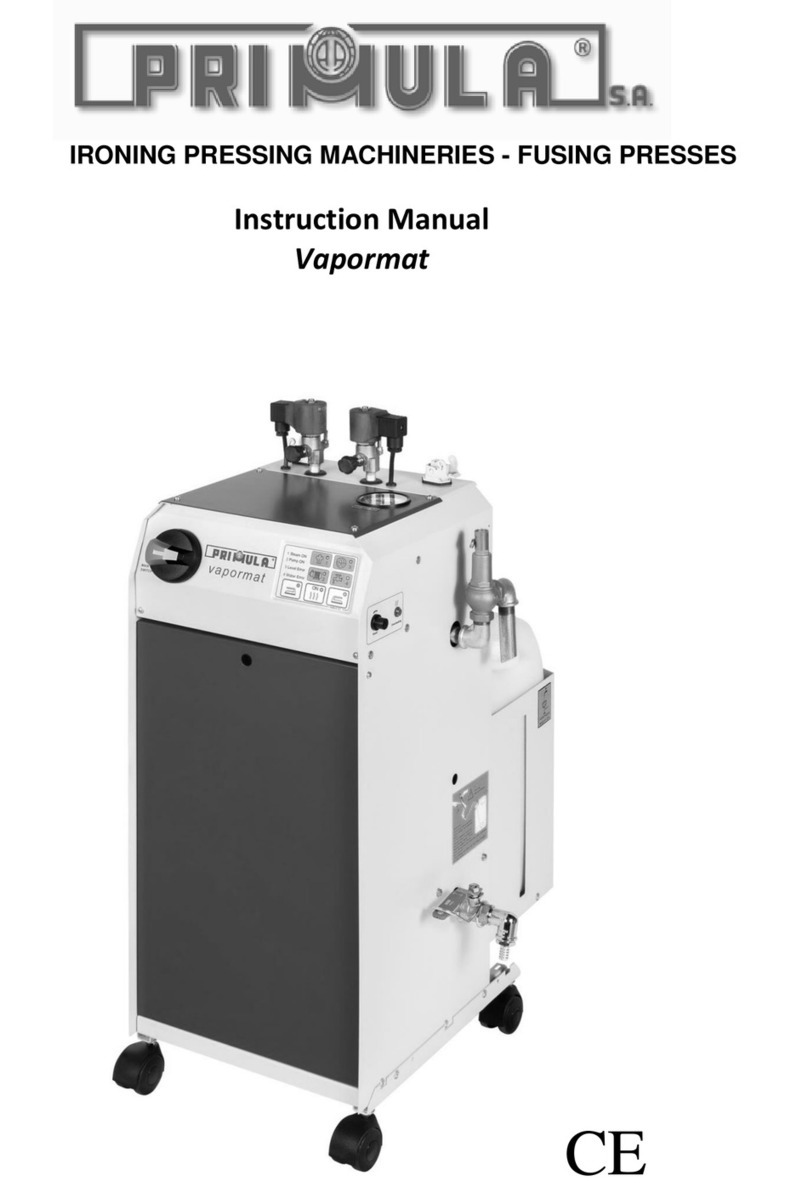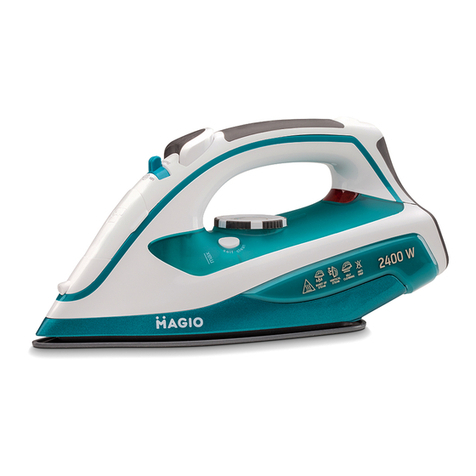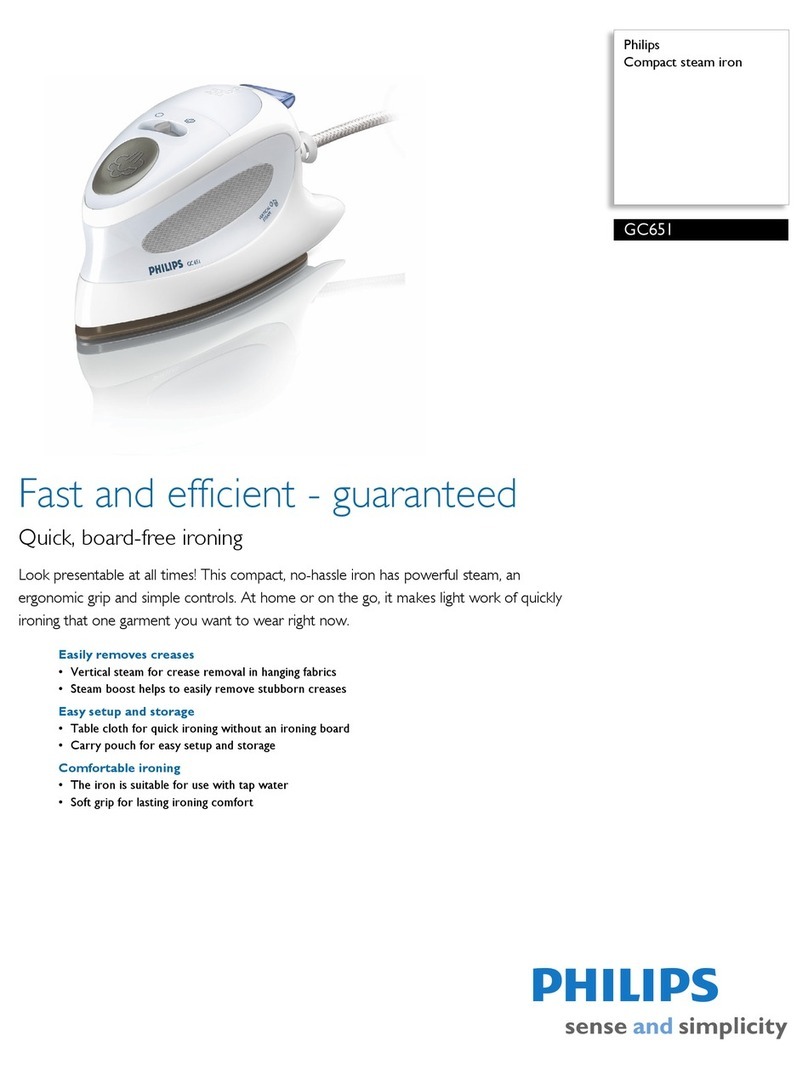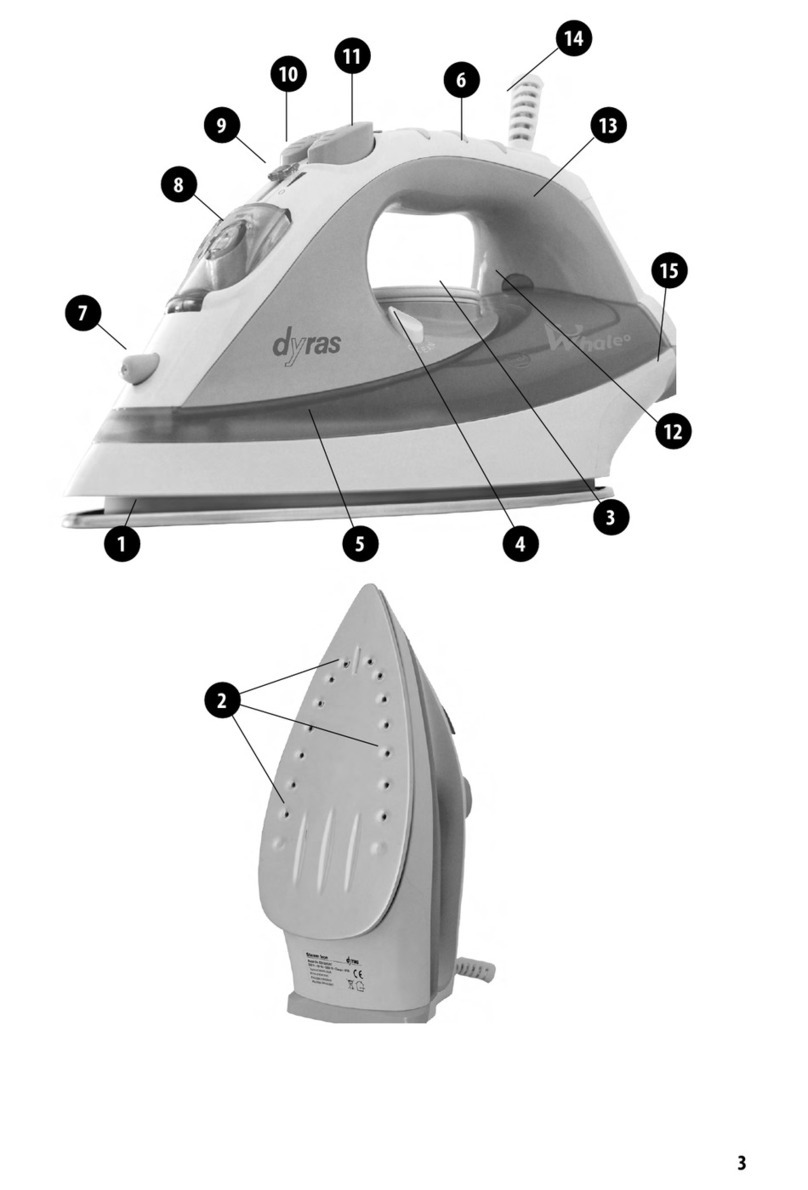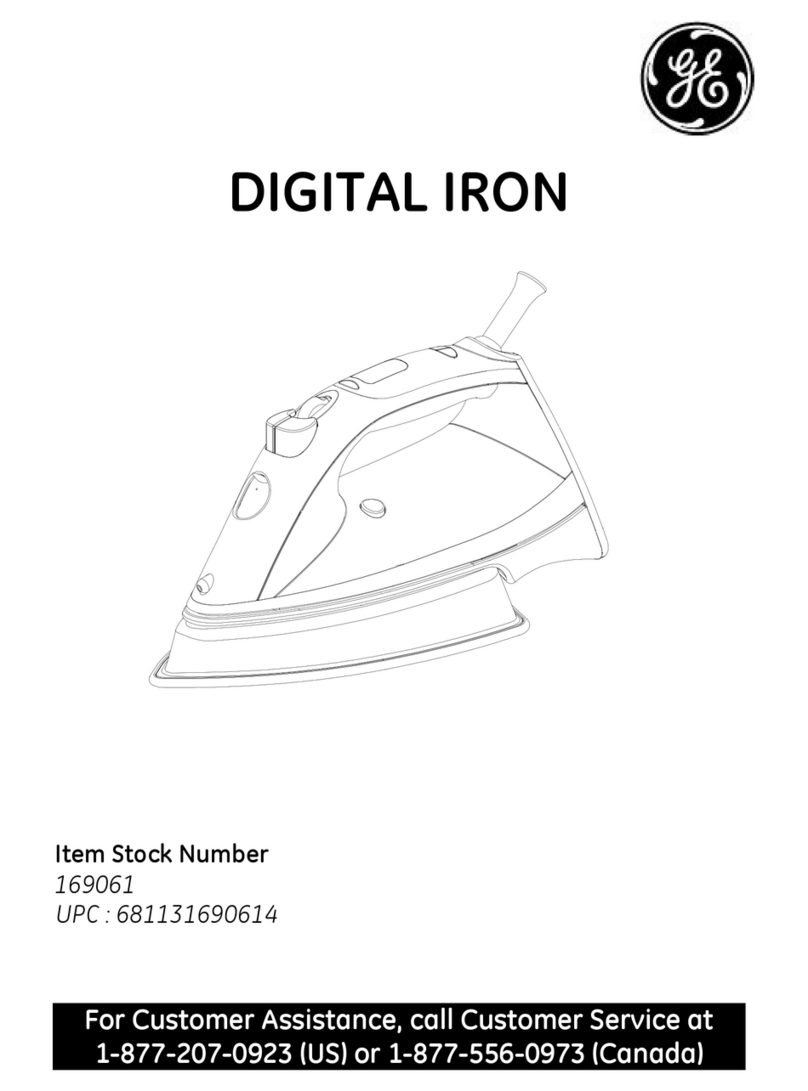- 7 -
Tips for Better Results
•Divide the articles to be ironed according to the types of material: wool with wool, cotton with
cotton, etc…
•Because the iron heats up much more quickly than it cool down, it is advisable to start with
those fabrics which require lower temperatures and move on to those which require
progressively higher temperatures.
•If the material is made up of more than one type of fibre, always set the temperature to the
fibre which requires less heat. For example, if the material is made up of 70% synthetics and
30% cotton, set the temperature control to position (•) (see table) without steam, that is, the
temperature for synthetic fabrics.
•If you do not know the composition of the article to be ironed, choose a part of the article
which will not be seen. Does test ironing on this part to establish the appropriate temperature
(always start with a relatively low temperature and work up until the ideal temperature is
reached).
•Pure (100%) wool articles can be ironed with the iron set to one of the steam positions. To
avoid pure wool, silk and synthetic materials becoming shiny, it makes good sense to iron them
on the reverse side.
•For other materials, especially velvet, which can become shiny very easily, cover them with a
cloth and iron in one direction only, using light pressure.
•The iron must be kept constantly moving over the fabric.
•It is advised that the steam button is used for short bursts rather than prolonged periods of
time. This can prevent water dripping from the steam holes and can reduce the frequency of
needing to refill the water tank.
Care and maintenance
CAUTION: Before performing any cleaning or maintenance work, make sure that you remove the
power cord from the electrical outlet and that the appliance has cooled down completely.
•Drain the remaining water from the water tank to prevent leakage during cleaning.
•Do not use abrasives or abrasive cleaners and wire to clean the plate or the boiler.
•Keep the soleplate smooth. Avoid contact with hard, metal objects. Do not scratch or damage
the surface of the soleplate.
•Do not place the iron on any metal surface. Only place the iron on the heat-resistant base.
•To prevent scratches and damage the plate, avoid any contact with hard metal objects.
•Wipe the upper part of the appliance with a damp cloth. Do not use abrasives or harsh cleaners
as they may damage the surface of the steam generator.
•Never immerse the appliance in water or nay other liquid. Never hold the iron or the base unit
under the tap.
Storage
•Allow appliance to cool down completely before storing.
•Remove water from the water tank after each use or before storage.
•Place the power cord (13) and the interconnection cord (14) into the cable storage box (12)
before storing.
•Store in a place without humidity, where it is not reachable by children.
